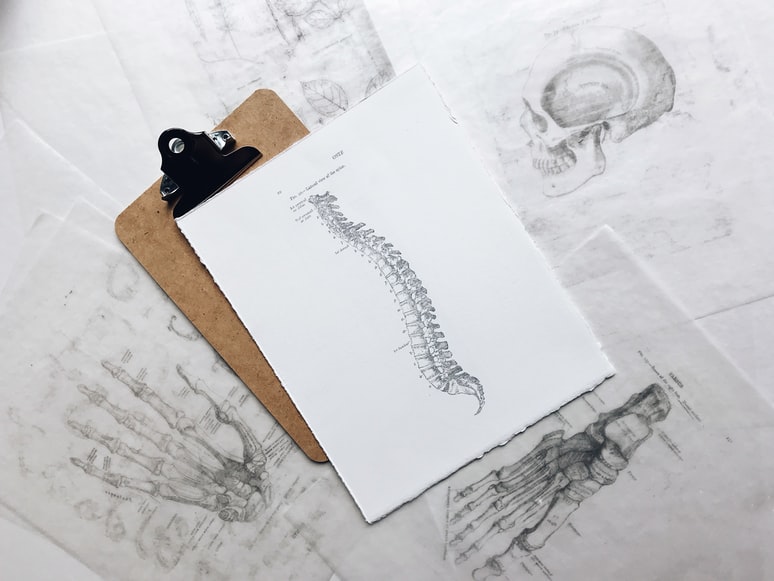12 Ways To Manage Spine Problems
If you’re having troubles moving your body, you’re most likely to have spine-related problems. These problems often manifest through back pain, and it’s the most common body pain and a symptom of several spine problems. According to experts, eight out of ten people experience back pain at some point in their lives.
Spine problems may be caused by injuries, extreme activities, and medical conditions. Unfortunately, these issues may occur at any age for various reasons. However, you may be more vulnerable to back problems as you get older, especially your lower back. So, be more extra careful.
Moreover, spine-related conditions are usually treated with non-invasive treatments, such as over-the-counter medications. However, surgical operations may be advised if these problems worsen and become chronic.
If you or your loved one is experiencing persistent and severe back pains, you may visit Dickinson Neurological Surgery or your local hospital to get diagnosed and treated accordingly. Also, here are the ways that may help you manage different spinal conditions:
1. Don’t Stop Moving

It is a common misconception to stop moving when you’re experiencing back pains. However, your doctor may recommend staying active and continuing your daily tasks and activities. You may not like the sound of it, but it’s true to most people, as it effectively mitigates back pains.
You may try to perform your usual daily movements, such as walking with your dogs, a 30-minute walk, or a morning jog. Also, they suggest staying on the track at least three to four times per week. But don’t put a lot of pressure on your back. Just make sure that you’re still moving the muscles as often as possible.
According to experts, being inactive will make your back muscles weak. It can lead to reduced spinal support and persistent back pains. It may be challenging at first, but it’s the simplest way to manage your spine to ensure it won’t lead to severe medical conditions.
2. Stretch and Strengthen Your Muscles
Muscles support the entire structure of your body, so it’s only essential to strengthen and make them more flexible. In addition, stronger muscles, especially your core, provide extensive back support, relieving and preventing spinal injuries.
According to experts, you may strengthen your muscles by performing stretches and light workouts in the morning. Also, they suggest prioritizing these exercises as the first thing they need to do in the morning. However, it is advisable for older people to perform strengthening workouts and stretches in the middle of the day when their bodies have already warmed up.
You may try some basic stretching routine that may help you strengthen your core and hip muscles, such as Yoga and Tai Chi. If you want to focus on your upper and lower back, the superman will be perfect and do this repetitively at least five to eight times per day.
3. Maintain Proper Posture

Good posture is one of the essential tricks to alleviate back problems, as it helps release the stress and pressure on your back, especially on the lower area. You may use wooden rods, tape, and elastic bands to keep your spinal column in a proper position. Also, try to make sure that your head is aligned to your pelvis, and stop slouching your shoulders and chin forward.
Furthermore, if you’re constantly working in the office, you may try to improve your posture by resting your arms on your desk and maintaining eye levels on top of the screen. However, the best way to manage your aching back is to get up from your chair do some light stretches and walks.
4. Maintain A Healthy Weight
Being overweight is one of the most common causes of back problems. It puts pressure on your back, especially on the lower area, causing extreme and annoying pains. Removing extra pounds will lighten the load on your spine. Also, you’ll be able to move freely without getting exhausted.
According to experts, losing extra weight also reduces the mechanical force placed on your back. In addition, maintaining a healthy weight will ensure the stability of your back and reduce the chances of disk misalignment.
However, the journey to weight loss may not be easy. So, it’s best to consult a professional for proper advice about the right meal plan and workout routine. Also, never try to put yourself at risk by not eating properly at the right time.
5. Stop Smoking

Smoking doesn’t only put you at risk but also other people around. Also, it’s one of the root causes of severe spine complications you wouldn’t want to experience. According to experts, smokers are four times more likely to suffer from degenerative disk disease, osteoporosis, etc.
The issue lies in the primary ingredient of tobacco and other cigarette products, which is nicotine. This toxic chemical is responsible for the decreasing spine health of most smokers, as it removes the essential compounds that keep your spongy disks in place.
However, withdrawal from nicotine addiction may be difficult to achieve. In that case, call a medical professional to help you achieve zero-nicotine levels in your body. Time is essential, so don’t hesitate to do it right away.
6. Apply Hot And Cold Treatment
You may have heard this recommendation from your doctor. But the question is, which one will work best for you? The answer to that is different for everyone. So, try to apply both methods and determine which works perfectly for you.
According to experts, cold treatments are best when addressing swelling and inflammation of the spine, while hot packs are excellent in treating tight and stiff muscles. Also, you may apply whichever method you prefer for 20 minutes with two to three-hour breaks. Then, continue the application at least three times per day.
Also, it’s not advisable to do this if you’re using creams and ointments to alleviate constant back pains.
7. Use OTC Medications

Doctors usually prescribe over-the-counter (OTC) medications to relieve body pains. They may advise you to use pain relievers, such as non-steroidal anti-inflammatory drugs (NSAIDs) or acetaminophen. Some forms of NSAIDs include naproxen sodium, ibuprofen, and aspirin.
As their name suggests, NSAIDs can reduce inflammation effectively, preventing the swelling and redness of the muscles. On the other hand, acetaminophen may not produce these results. However, you can still purchase both of them if you’re having infrequent pains in the spine. But if you have spinal arthritis or other inflammation problems, NSAIDs may work better for you.
8. Apply Creams And Ointments
If you’re not okay with taking NSAIDs or other pain-relieving medications to avoid experiencing side effects, you may use non-invasive treatments, such as medicated creams and ointments. Others may include skin patches, balms, and salves. You may use them when your back feels sore, stiff, and painful.
Usually, these non-invasive treatments contain essential ingredients, such as menthol, eucalyptus, or camphor. These substances provide numbing, cooling, and heating sensations on the affected area.
You may apply these products to painful areas. But if you can’t reach the spot, you may ask someone to put them for you. Also, these creams don’t address the root cause of your back pain, which lies deep in your spine. So, don’t expect them to provide you with a long-term solution. However, they can still help you calm your pain down.
9. Know Your Supplements

While it’s best to get your daily nutrients from food, it would still be best if you took additional supplements, especially if you have specific dietary conditions. For example, if you’re not getting the right amounts of vitamin D, your doctor may advise you to take supplements rich in vitamin D, such as milk-based formula.
Vitamin D is essential to keep your bones, including your spine, strong and healthy. It also helps them become less porous and fragile, leading to various spine conditions, specifically osteoporosis. Your body may process vitamin D during exposure to morning sunlight. You may also get them on vitamin D-rich foods, such as dairy products, cereals, fatty fish, etc.
In addition, you might want to keep an eye on your magnesium intake. Magnesium deficiency may cause your muscles to become weak and inflamed, providing less support to your spine causing severe back pains.
However, before taking any supplements, make sure to discuss such matters with your doctor first. They will give you proper instructions, especially on the dosage you have to take per day, to avoid side effects and reduce the risks of having organ failures.
10. Increase Your Calcium Intake
Calcium works hand-in-hand with vitamin D to make your bones strong and more flexible. These will help you prevent osteoporosis, one of the leading causes of back pain, especially in older women. So, it’s vital to consume foods rich in calcium, such as:
- Milk and other dairy products, such as cheese, yogurt, etc.
- Green leafy vegetables, such as kale but not spinach (it contains a high amount of calcium, but your body won’t digest most of them)
- Bread made with fortified flour
- Calcium-fortified products, such as soymilk (as long as the product states it)
However, if you’re allergic to most products presented above, you may try to get it from supplements. But make sure to always consult your doctor first before taking any supplements.
11. Use A Towel

You might be surprised to hear this, but a simple towel can help you manage spine-related problems. You may roll up your towel and put it under your pelvis when you’re lying down. Then, let your lower back relax and release the tension inside.
According to experts, you may use a back brace to help you better, especially after a surgical operation or suffering from injuries. However, experts suggest not to become dependent on these tools as the muscles become weak and lazy to move. So, only use them at the length of time your doctor tells you.
12. Lighten Your Baggage
One of the most common causes of spine problems is carrying heavy loads. However, it happens not only to people who work by lifting heavy boxes but also to those who carry overloaded items. These include bulky grocery items, laptop bags, backpacks, or suitcases. Lifting heavy loads may put a lot of stress and pressure on your back.
If possible, try to unload some weight by carrying fewer items. You may also distribute the weight on both sides of your body or shift the baggage from one shoulder to another when necessary. Also, consider using a cart or anything with wheels to help you transport heavy objects without straining your back.
What Are The Common Spine Problems You Have To Know?
Here are the spine problems you might need to know:
- Slipped Disc: This happens when the cushion in your spine pushes itself out. It is usually painful, especially when it affects the nerves around them. However, a simple exercise, pain relievers, and adequate rest may help to improve the condition gradually.
- Ruptured Disc: As the name suggests, the vertebral disk ruptures, resulting in intense pressure on the nerves causing persistent back pain.
- Bulging Disc: This condition is similar to a ruptured disc, but it’s more painful as it applies more pressure to the nerves.
- Sciatica: This occurs when the sharp pain radiates to your sciatic nerve. Usually, this is caused by herniated or bulging discs.
- Osteoporosis: This is the most common spine-related problem that usually comes with age. As people get older, their bones become weak and porous, making them fragile and easily damaged.
- Arthritis: Usually osteoarthritis. It can cause pain in the joints around your bones in the hips and lower back. Also, there are instances when your spinal cord narrows down. It is called spinal stenosis.
- Scoliosis: This condition is common in children before reaching their puberty stage. It occurs when the spine twists out of shape, bulging one of the shoulder blades out.
If you think you might be experiencing one of the following conditions, consult a neurosurgeon or orthopedic surgeon immediately, especially if it’s persistent and severe.
Final Words
The good thing about spine problems is that they rarely require invasive surgical operations. In most cases, they can be treated with adequate rest and pain relievers. However, pain that lasts for several months may require surgery. But don’t worry, as most operations are non-risky.
Also, managing these problems does not usually require technical knowledge as long as you know the basics. You may try some techniques presented above to reduce your pain and increase your quality of life.
Read Also:
- 7 Reasons Why Organic/All Natural Mattresses are Good for Your Health
- Helpful Tips to Improve your Posture and Reduce Back Pain
- Best Chiropractors In Franklin, Tennessee
- We Got Your Back: Why Osteopathic Physicians Might be Your Next Best Friend



